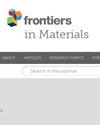使用 Co3O4 纳米颗粒作为可回收纳米催化剂合成新型吡咯衍生物和吡喃并[2,3-c]吡唑衍生物的多组分合成及无创生物评估
IF 2.9
4区 材料科学
Q3 MATERIALS SCIENCE, MULTIDISCIPLINARY
引用次数: 0
摘要
本研究使用 Co3O4 纳米颗粒作为纳米催化剂,合成了两种不同系列的含氮杂环化合物,包括吡咯(Pyo)衍生物和吡喃 [2, 3-c]Pyrazole (Pya[2, 3-c]Pyz) 衍生物。在合成衍生物时,分别使用 15 摩尔%和 10 摩尔%的催化剂合成 Pyo 衍生物和 Pya[2, 3-c]Pyz 衍生物,观察到效率在 83% 和 96% 之间。此外,还合成了 Pyo 和 Pya[2,3-c]Pyz 的新型衍生物,并确认了它们的结构。总的来说,与之前的报道相比,使用钴纳米粒子的优点包括合成新的衍生物、合成衍生物的温度较低、合成时间较短和效率高。对合成产物的抗菌、抗真菌和抗氧化等生物特性进行了测试和研究。在抗菌和抗真菌测试中,测量并报告了 IZD、MIC、MBC 和 MFC。在抗氧化活性方面,计算并报告了 IC50。使用钴纳米颗粒作为催化剂的重要优点是可重复使用性高、绿色环保、可合成新的衍生物以及合成产品的效率更高、时间更短。在抗氧化试验中,合成的 Pyo 衍生物和 Pya[2, 3-c] Pyz 衍生物的 IC50 分别为 12.2 至 13.71 μg/mL 和 16.18 至 17.75 μg/mL。在抗菌试验中,合成的 Pyo 衍生物和 Pya[2, 3-c]Pyz 衍生物的 MIC 分别为 2 至 4 096 μg/mL 和 2 至 2048 μg/mL。结果表明,Pyo 衍生物的抗氧化性高于 Pya[2,3-c] Pyz 衍生物,但 Pya[2,3-c] Pyz 衍生物的抗菌效果高于 Pyo 衍生物。抗氧化结果证明,Pyo 衍生物和 Pya[2,3-c] Pyz 衍生物的活性并不依赖于衍生物的取代度,而是相互接近。因此,在此基础上提出了 Pyo 衍生物和 Pya[2, 3-c] Pyz 衍生物稳定 DPPH 的机制。最后,根据 Pyo 衍生物比 Pya[2, 3-c] Pyz 衍生物更稳定的共振结构,证明了其高抗氧化性。Pya[2,3-c] Pyz 衍生物有两个杂环,分别连接吡喃和吡唑,而 Pyo 衍生物只有一个杂环(吡咯)。因此,与 Pyo 衍生物相比,Pya[2, 3-c] Pyz 衍生物具有较高的抗菌性,这可能是由于其具有两个具有生物活性的杂环。本文章由计算机程序翻译,如有差异,请以英文原文为准。
Multi-component synthesis and invitro biological assessment of novel pyrrole derivatives and pyrano[2,3-c]pyrazole derivatives using Co3O4 nanoparticles as recyclable nanocatalyst
In this study, Co3 O4 nanoparticles were used as nanocatalyst for two different series of nitrogen-containing heterocyclic compounds, including pyrrole (Pyo) derivatives and pyrano [2, 3-c]pyrazole (Pya[2, 3-c]Pyz) derivatives. In the synthesis of derivatives, using 15 mol% and 10 mol% of the catalyst for Pyo derivatives and Pya[2, 3-c]Pyz derivatives, respectively, an efficiency between 83% and 96%, were observed. In addition, novel derivatives of Pyo and Pya[2,3-c]Pyz were synthesized and their structures were confirmed. In general, the advantages of using cobalt nanoparticles compared to previous reports include the synthesis of new derivatives, lower temperature used in the synthesis of derivatives, shorter synthesis time and high efficiency. The biological properties of the synthesized products, such as antibacterial, antifungal, and antioxidant properties, were tested and investigated. In antibacterial and antifungal tests, IZD, MIC, MBC, and MFC were measured and reported. In antioxidant activity, IC50 was calculated and reported. High reusability, green and environmentally friendly, synthesis of new derivatives and synthesis of products with higher efficiency and shorter time were the important benefits of using cobalt nanoparticles as a catalyst. In antioxidant tests, the IC50 for synthesized Pyo derivatives and Pya[2, 3-c] Pyz derivatives were between 12.2 and 13.71 μg/mL, and 16.18–17.75 μg/mL, respectively. In antimicrobial testes, the MIC for synthesized Pyo derivatives and Pya[2, 3-c]Pyz derivatives were between 2 and 4,096 μg/mL, and 2–2048 μg/mL, respectively. The results showed that the antioxidant property of Pyo derivatives were more than Pya[2, 3-c] Pyz derivatives, but the antimicrobial effect of Pya[2,3-c] Pyz derivatives were more than Pyo derivatives. The antioxidant results proved that the activity of Pyo derivatives and Pya[2, 3-c] Pyz derivatives does not depend on the substitutions of the derivatives and is close to each other. Therefore, based on this, a proposed mechanism for stability of DPPH by Pyo derivatives and Pya[2, 3-c] Pyz derivatives were suggested. Finally, based on the more stable resonance structures of Pyo derivatives, compared to Pya[2, 3-c] Pyz derivatives, its high antioxidant property was justified. Pya[2, 3-c] Pyz derivatives has two heterocyclic rings connected together pyrano and pyrazole, but Pyo derivatives has only one heterocyclic ring (pyrrole). So high antimicrobial property of Pya[2, 3-c] Pyz derivatives compared to Pyo derivatives can be attributed to having two bioactive heterocyclic rings.
求助全文
通过发布文献求助,成功后即可免费获取论文全文。
去求助
来源期刊

Frontiers in Materials
Materials Science-Materials Science (miscellaneous)
CiteScore
4.80
自引率
6.20%
发文量
749
审稿时长
12 weeks
期刊介绍:
Frontiers in Materials is a high visibility journal publishing rigorously peer-reviewed research across the entire breadth of materials science and engineering. This interdisciplinary open-access journal is at the forefront of disseminating and communicating scientific knowledge and impactful discoveries to researchers across academia and industry, and the public worldwide.
Founded upon a research community driven approach, this Journal provides a balanced and comprehensive offering of Specialty Sections, each of which has a dedicated Editorial Board of leading experts in the respective field.
 求助内容:
求助内容: 应助结果提醒方式:
应助结果提醒方式:


